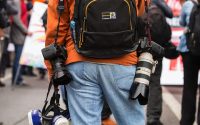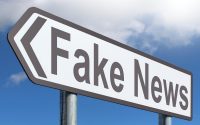Where Journalism Stands in Today’s Society
by Jack Lueddeke

The press plays a crucial role in democratic societies around the globe. In order for democracy to work the founders of the United States believed that education is key to making good decisions, and the press has a duty to help educate the public so that they can engage in “robust, open debates about competing ideas, so they can arrive at the best decisions regarding self-governance” (Dean and Scott 2015). For much of history journalism has remained unchanged until the digital revolution that occurred in the mid to late 1990s. Has this digital revolution changed journalism’s place in society?
The changes to journalism have been quick and drastic. With the invention of the internet news sources are losing the profits they once received from print to digital sources that are expected to be free. As a result, many journalists have been laid off; this reduces the capacity for good journalism as it puts more pressure on individual journalists to do more work. Environmental journalism has felt these changes more so than other types of journalism. CNN completely dropped its science and environment unit in 2009 because the network could not afford to keep it. Camille Feanny worked for CNN’s science and environment unit for close to a decade and was still part of it when it was abandoned. She feels that today people need environmental news more than ever before. She says that “at a time when, more than ever, the public needs science and environmental news to make informed decisions, the stories are not on the air.” (Daley 2010). People need environmental news now to make the best decision in light of climate change. While there are less journalists than in the past, it does not mean that the press is losing its place in society; in fact, more people are engaging with news than ever before (Dear and Scott 2015). Journalism is stronger than ever because of the digital revolution as digital formats offer more benefits than previous mediums. Bob Wyss dives into the benefits of multimedia journalism in his book Covering the Environment: How Journalists Work the Green Beat. He writes that the internet “lends itself to visual presentation and new and more sophisticated editing software can seamlessly combine video, stills, graphics and audio” (Wyss 2018, 202). Multimedia journalism aids in the role of the press to help educate the public on the going-ons of the world so that they can make the most informed decisions.
Journalism still fulfills its role; however, it has simply become harder for the public to navigate all the different sources. Through social media and better technology anyone can be a journalist so to speak. Smart phones are capable of recording entire events and allow people to instantaneously get what they have to say out into the world. This new phenomenon is called citizen journalism and it can be “effective, accurate or grossly misleading” (Wyss 2018, 205). With so many sources available and the fact that anyone can create a story for the world to see concerns about fake news arise. News is verifiable information shared in the public’s interest; if it is fake, then it’s not news (UNESCO 2018). Fake news is out there, and it can often be hard to distinguish from actual news. Trusted news sources now have to compete with these fake news sources which get in the way of the press’s job to educate the public in our democratic society. Good journalism is about truth and trust, fake news is a way to erode that trust and distract from critical content that the public needs. Journalism still holds the same place in society that its always held, there are just more un-credible sources that make journalists’ jobs harder to do.
Sources:
Daley, John. 2010. Why the Decline and Rebirth of Environmental Journalism Matters. Yale Climate Connections. https://www.yaleclimateconnections.org/2010/01/why-decline-rebirth-of-environmental-journalism-matters/. Accessed September 6, 2019
Dear, Jennie and Faron Scott. The Responsible Journalist. New York: Oxford, 2015. Digital
UNESCO. “Fake News and Disinformation”. 2018. Video
Wyss, Bob. Covering the Environment: How Journalists Work the Green Beat. 2nd edition. New York: Routledge, 2018. Print

